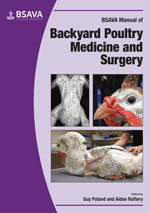
Full text loading...

Fractures in poultry are not very common and can sometimes be the result of underlying disease, which needs to be considered when planning corrective management. Developmental diseases are more commonly seen in fast-growing birds. This chapter covers general principles, common fracture repair techniques, fractures of the beak, skull, thoracic and pelvic limbs, amputation, fracture disease and developmental disorders.
Orthopaedic surgery, Page 1 of 1
< Previous page | Next page > /docserver/preview/fulltext/10.22233/9781910443194/9781910443194.24-1.gif

Full text loading...










